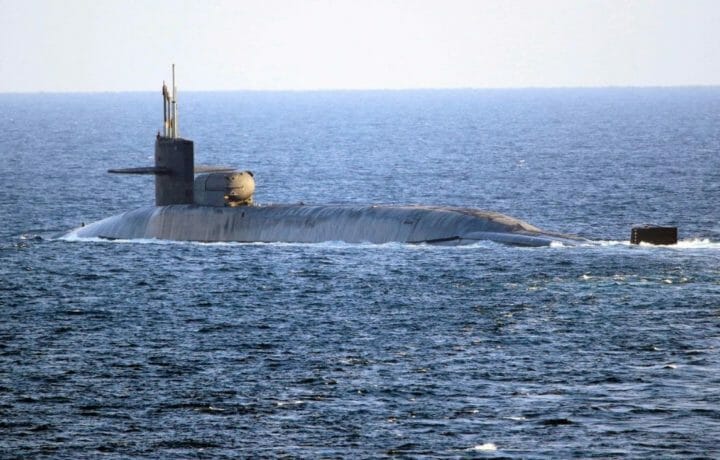For the second time in two weeks, American ships have fired warning shots at Iranian speedboats. On Monday, a U.S. Coast Guard ship fired warning shots from its .50-caliber machine gun at a large group of armed Iranian speedboats. The speed boats were quickly approaching American ships that were passing through the Strait of Hormuz.
Not the First Iranian Interaction
The first incident happened on April 26 when the Navy said its ships encountered Iranian speedboats in international waters in the North Arabian Gulf. After issuing several warnings, they fired warning shots.
Pentagon Press Secretary John Kirby said that the group of 13 fast boats were part of Iran’s Islamic Revolutionary Guard Corps Navy. He called the encounter “significant.”
He also said the boats “conducted unsafe and unprofessional maneuvers, and failed to exercise due regard for the safety of U.S. forces as required under international law, while operating in close proximity to U.S. naval vessels.”
USS Georgia On The Move
Six US Navy and Coast Guard vessels were escorting the guided-missile submarine Georgia when the incident happened. The six ships were the guided-missile cruiser Monterey, Navy patrol ships Thunderbolt, Hurricane and Squall, and the Coast Guard patrol boats Maui and Wrangell.
The Navy said that two of the 13 Iranian speedboats broke away from the larger group and moved to the opposite side of the US formation. Those two speedboats approached the Maui and Squall from behind at more than 32 knots or nearly 37 miles per hour.
The Iranian boats had their weapons uncovered and manned. The 11 other Iranian boats remained in their original position the Navy said, putting the U.S. ships between two groups of Iranian boats.
Multiple Warning Shots Before Shots Were Fired
Kirby said the U.S. ships followed “all the appropriate and established procedures” and made several attempts to communicate with the Iranian boats and dissuade them from their approaches. The Navy said the Maui and Squall made multiple bridge-to-bridge verbal warnings, five “acoustic device” warnings, and five short horn blasts. This is one of the internationally recognized signal for danger when trying to prevent collisions at sea.
With those efforts unsuccessful the Maui fired two volleys of warning shots from its .50 cal, totaling about 30 shots. The first volley was made when the ships were within 300 yards and the second, they were within 150 yards. After the warning shots the Iranian ships broke off contact.
U.S. is Ready Whenever Necessary
“Our Navy will continue to fly, sail and operate anywhere international law allows while promoting the rules-based international order throughout the region,” the service continued. “In support of international norms, the U.S. is not an aggressor. Our naval forces remain postured in a non-provocative manner that exemplifies professionalism, incentives adherence to international law and customs, and persuades others to emulate our actions. Our forces are trained, however, to conduct effective defensive measures when necessary.”
Kirby declined to comment on the Iranian boats’ possible motivations for this encounter or at what point US ships might fire directly on Iranian vessels.
“This kind of activity is the kind of activity that can lead to somebody getting hurt, and can lead to a miscalculation in the region,” Kirby said. “And that doesn’t serve anybody’s interests.”




